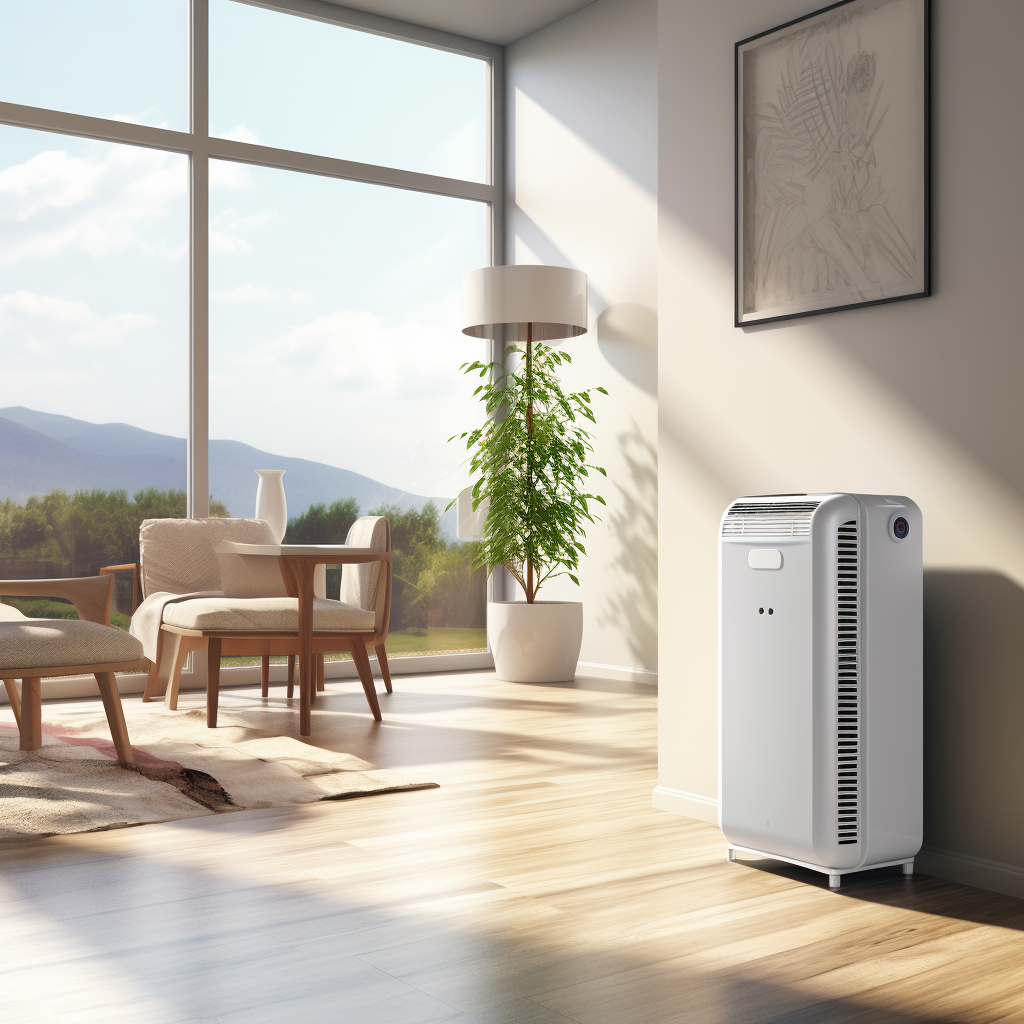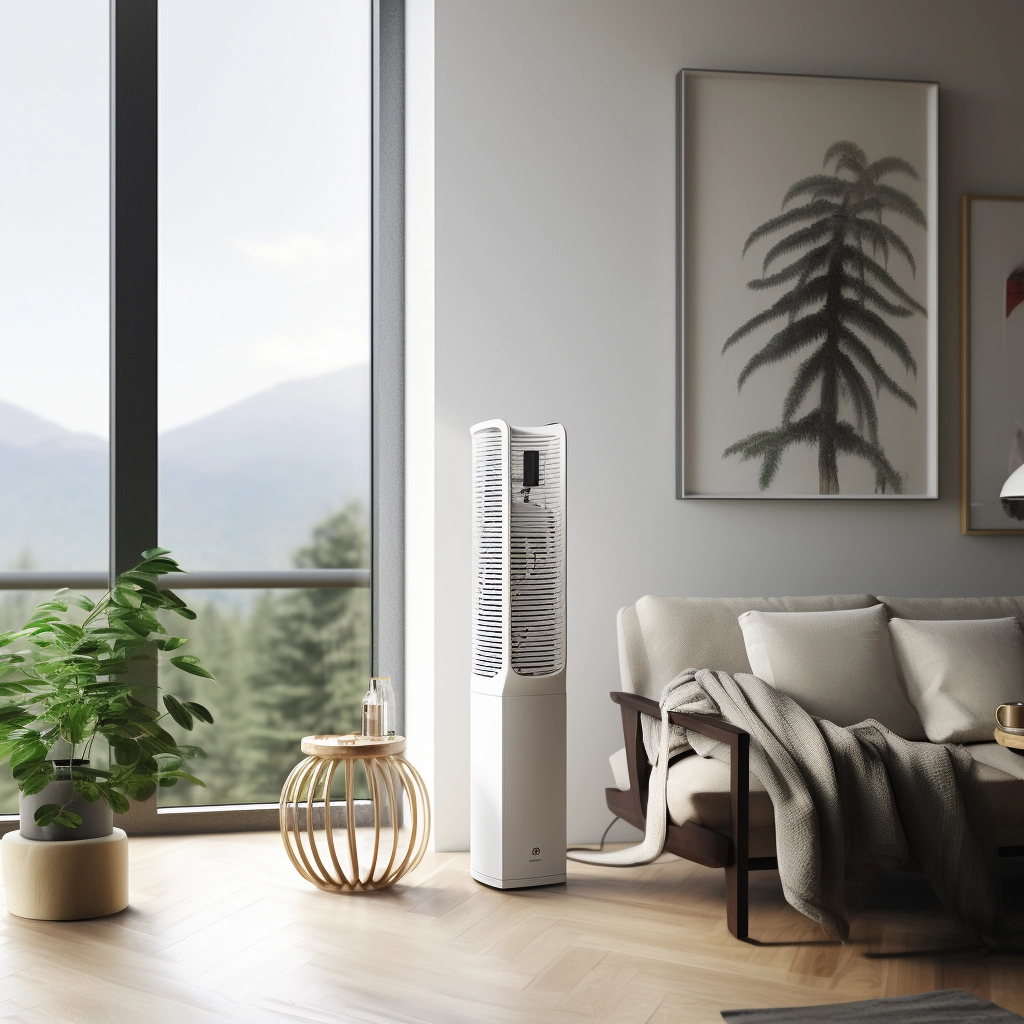Whole house or whole home dehumidifier units can play an important role to a home’s air moisture content. In the below article we walk through what they are, what to consider, and the pros/cons of these units. At the end of the article we cover some of the most popular dehumidifier units.
Short Summary
Whole house dehumidifiers can play a vital role in regulating a homes moisture content and/or moist air. If there is too much moisture in a home – these units can come in handy.
A dehumidifier unit can assist in regulating mold buildup from moisture.
Dehumidifiers can play a role in limiting respiratory infections within the home as a part of a overall air purification strategy.
What is a Whole-House dehumidifier?
A whole-house dehumidifier is designed to regulate indoor humidity levels throughout a home. Unlike portable dehumidifiers that only target specific areas, a whole-house dehumidifier works in conjunction with the existing HVAC system to address excess moisture throughout the entire house. This system is typically installed in a central location, allowing it to remove humidity from the air as it circulates through the ductwork.
By controlling indoor moisture levels, whole-house dehumidifiers help remove moisture and prevent mold growth, dampness, and musty odors, creating a healthier and more comfortable living environment for occupants. With its ability to handle larger spaces and offer automated humidity control, a whole-house dehumidifier proves to be an effective solution for maintaining optimal indoor air quality in residential settings.

What to Consider When Choosing a Whole-House Dehumidifier
When selecting a whole-house dehumidifier, several crucial factors should be taken into consideration. First and foremost, assess the size of your home and its specific moisture issues to determine the appropriate capacity and coverage needed. Look for models, with adjustable and humidity level settings, as this allows you to customize the level of dehumidification for optimal comfort.
Energy efficiency is also vital, as a whole-house dehumidifier will be running for extended periods. Choosing an Energy Star-certified unit can help save on energy costs while minimizing environmental impact. Additionally, consider the installation process and whether you need a standalone unit or one that integrates with your existing HVAC system. Look for user-friendly controls and features like automatic shut-off and drainage options to ensure hassle-free operation.
Finally, don’t forget about maintenance requirements, such as filter cleaning or replacement, to keep and maintain the dehumidifier cooling systems functioning effectively.
How Does a Whole House Dehumidifier Work?
A whole-house dehumidifier is integrated into the home’s existing HVAC system, working in conjunction with it to regulate indoor humidity levels. When the HVAC system runs, the dehumidifier pulls in air from various rooms, removing excess moisture from humid air in the process. The air is then cooled, causing the moisture to condense into water droplets. These droplets are collected and drained away, leaving the air with reduced humidity levels before it is recirculated throughout the house.
The dehumidifier continues this cycle automatically, maintaining a consistent and comfortable humidity level throughout the home. This approach ensures that no area is overlooked, and homeowners can enjoy improved air quality, reduced risk of mold growth, and enhanced overall comfort with the help of a whole-house dehumidifier.
Will a dehumidifier in the basement help the whole house?
A dehumidifier in the basement can help the whole house. Basements have high humidity levels due to lack of ventilation. Excess moisture in the basement can seep into the rest of the house, leading to increased humidity levels and potential mold growth in other areas.
By using a dehumidifier in the basement, you can control the moisture levels in that space, preventing it from spreading to the rest of the house.
As the dehumidifier reduces the humidity in the basement, it creates a drier air balanced environment throughout the home, ensuring better indoor air quality, reducing musty odors, and mitigating the risk of mold and mildew issues in other living spaces.
How much does a Whole-House Dehumidifier?
The cost for a whole-house dehumidifier can vary based on factors like brand, capacity, and additional features. On average, the cost may range from $1,500 to $3,500, including installation.
While this may seem higher than portable dehumidifiers, it’s essential to understand the benefits. For instance, a whole-house dehumidifier efficiently covers the home, eliminating the need for multiple units in different rooms.
Additionally, it integrates with the HVAC system, leading to energy savings and reduced maintenance costs. Over time, homeowners can experience significant savings on energy bills and potential repair expenses. Moreover, a whole-house dehumidifier contributes to a healthier indoor environment by controlling moisture, preventing mold, and improving overall air quality.
Considering the long-term advantages and the tailored approach to moisture control, the investment in a whole-house dehumidifier is worthwhile for those seeking comprehensive and cost-effective dehumidifier solutions for their own home’s air and humidity needs.
Where is the best place to put a whole-house dehumidifier?
The best place to install a whole-house dehumidifier is typically within the HVAC system, close to the air handling unit or the return air duct. This placement ensures that the dehumidifier can effectively treat the air before it circulates throughout the entire house. Integrating the dehumidifier into the HVAC system allows it to dehumidify the air as it passes through, providing comprehensive air purification and moisture control for the home.
Some whole-house dehumidifiers may also have a built-in duct system to distribute dry air more effectively throughout the home. In this case, the installation location should still be close to the air handling unit or return air duct for the best results.
The location of the dehumidifier is crucial for its effectiveness, so consulting with an HVAC expert is recommended to ensure the whole-house dehumidifier is installed correctly and meets the specific requirements of your home’s moisture and humidity control needs.
Whole-House Dehumidifier Pros
Discover the numerous benefits of installing a whole-house dehumidifier in your home. From enhanced indoor air quality to energy efficiency, read on to explore why this innovative appliance is a game-changer for your living space.
Improved Indoor Air Quality:
A whole-house dehumidifier effectively reduces excess moisture, preventing the growth of mold, mildew, and dust mites. By maintaining optimal humidity levels, it ensures healthier air for you and your family, reducing the risk of respiratory issues and allergies.
Comfortable Living Environment:
Humidity can make a room feel stuffy and uncomfortable. With a whole-house dehumidifier, you can create a more pleasant living environment by regulating humidity levels, providing year-round comfort no matter the weather.
Protects Your Home and Belongings:
High humidity levels can damage your home’s structure and belongings. Wooden furniture, electronics, and artwork are particularly vulnerable to moisture. A whole-house dehumidifier safeguards your investments by preserving their condition and extending their lifespan.
Energy Efficiency:
Compared to portable dehumidifiers, whole-house units are more energy-efficient. They are integrated with your HVAC system, which allows them to work in conjunction with the heating and cooling system, optimizing energy consumption and lowering utility bills.
Low Maintenance:
Whole-house dehumidifiers require minimal maintenance. They often have self-draining features, eliminating the need to empty water trays frequently. Additionally, many models have air filters that capture dust and allergens, reducing the need for frequent cleaning.
Noise Reduction:
Unlike portable dehumidifiers, whole-house units operate quietly since they are usually installed in the basement or utility room. This ensures peace and tranquility throughout your home without the constant noise of a portable unit running in the background.
Seamless Integration:
Whole-house dehumidifiers can be seamlessly integrated into your existing HVAC system, requiring little to no modification to your home’s structure. Their discreet placement ensures they don’t obstruct your living space or aesthetics.
Energy Recovery Benefits:
Some whole-house dehumidifiers come with an energy recovery ventilator (ERV) feature, which allows for the exchange of stale indoor air with fresh outdoor air. This not only improves air quality but also enhances energy efficiency by transferring heat and humidity between the incoming and outgoing air streams.

Whole House Dehumidifiers Cons
Installation Complexity:
Installing a whole-house dehumidifier can be more complicated than setting up a portable unit. It often requires professional installation, which can add to the overall cost. Additionally, the installation process may involve modifications to your HVAC system or ductwork.
Increased Energy Consumption:
While whole-house dehumidifiers are generally more energy-efficient than portable units, they can still add to your energy consumption. Depending on the size of your home and the dehumidifier’s capacity, you might notice a slight increase in your energy bills.
Maintenance Costs:
Whole-house dehumidifiers, like any complex appliance, require regular maintenance to ensure proper functioning. This may involve filter replacements, cleaning, and occasional servicing, which could add to the overall cost of ownership.
Space Requirements:
Whole-house dehumidifiers are typically installed in utility rooms, basements, or crawl spaces. If you don’t have adequate space for installation, it might not be a viable option for your home.
Noise (For Some Models):
While most whole-house dehumidifiers are designed to operate quietly, some models may produce noticeable noise, particularly during periods of high humidity or heavy dehumidification. This noise may be a concern for sensitive individuals or those who prefer a quiet living environment.
Dependent on HVAC System:
The functionality of a whole-house dehumidifier is closely tied to the HVAC system. If your HVAC system experiences a breakdown or requires maintenance, it may affect the dehumidifier’s performance.
Best Whole House Dehumidifiers
Aprilaire 1850F Pro Dehumidifier: This unit is powerful, efficient, and capable of removing up to 95 pints of moisture per day. It is designed to integrate with your HVAC system and comes with an automatic humidity control feature. The Aprilaire 1850F Pro is designed to be integrated into your home’s HVAC system, allowing it to work seamlessly with your heating and cooling setup. This integration ensures consistent and efficient dehumidification throughout your entire home. The dehumidifier comes with an automatic humidity control feature, which allows you to set your desired indoor humidity level. The unit will then adjust its operation to maintain the preset humidity level automatically.
Santa Fe Advance 2 Dehumidifier: This dehumidifier is known for its high-performance, energy efficiency, and durable build. It can remove up to 90 pints of moisture per day and is suitable for larger homes or basements. Despite its powerful performance, the dehumidifier is designed to be energy-efficient, helping you save on utility costs while maintaining optimal indoor humidity levels.
Honeywell DR90A2000 Whole House Dehumidifier: This model is popular for its ease of installation and reliable performance. It can remove up to 90 pints of moisture per day and has a built-in air filter to improve indoor air quality. The dehumidifier is designed for easy installation, making it a convenient choice for homeowners looking to improve indoor air quality quickly and effortlessly.
Ultra-Aire 98H Dehumidifier: This unit is known for its energy efficiency and quiet operation. It can remove up to 98 pints of moisture per day and features an optional fresh air intake for improved air circulation. Some models of the Ultra-Aire 98H come with an optional energy recovery ventilator (ERV) feature. This feature allows for the exchange of stale indoor air with fresh outdoor air, promoting better indoor air quality and energy efficiency. Quiet Operation: Despite its high performance, the dehumidifier operates quietly, ensuring minimal disruption to your daily activities.
Frigidaire FGAC7044U1 Dehumidifier: This is a portable whole-house dehumidifier with a large capacity and excellent moisture removal capabilities. It can remove up to 70 pints of moisture per day and comes with a user-friendly control panel. The dehumidifier’s portable design allows for flexible placement and easy relocation to different areas of your home where humidity issues are most prevalent.

